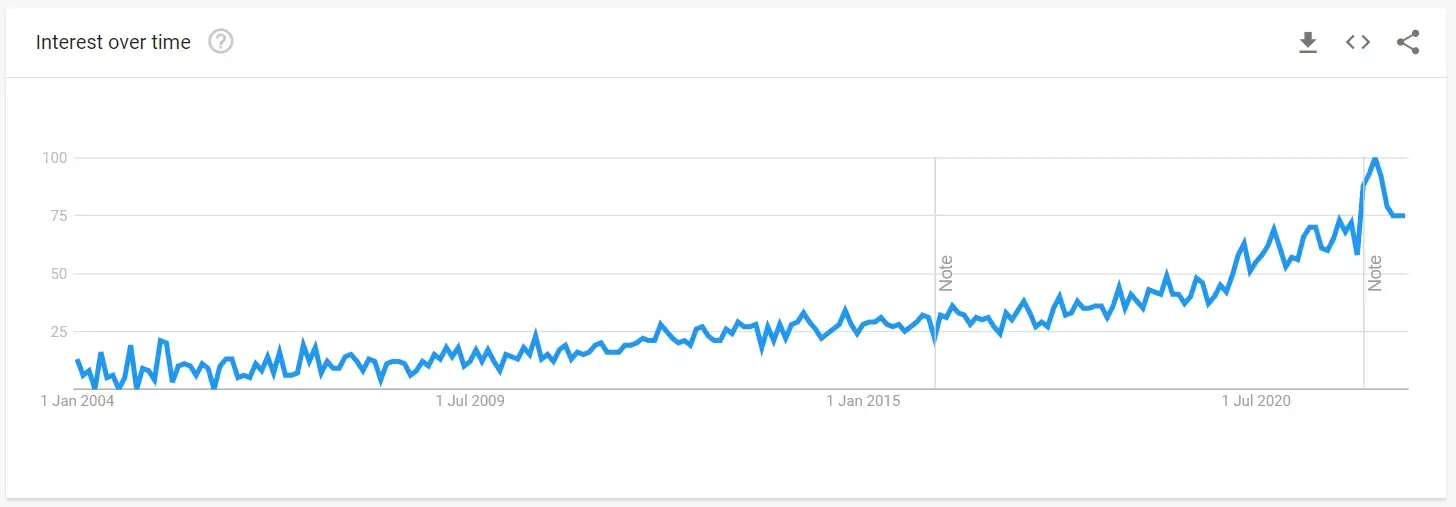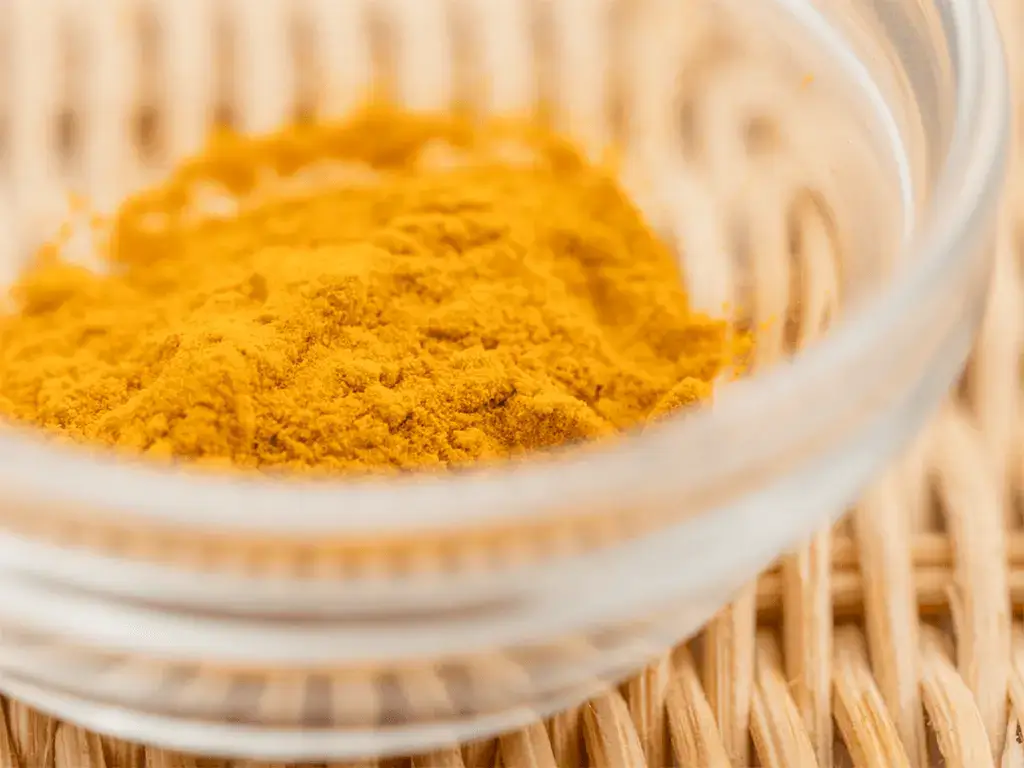While food as medicine has been a concept for millennia, it has recently been gaining popularity. As chronic disease prevalence is still increasing in the U.S. and adherence to national dietary guidelines is low[1], people are turning to whole foods to heal from “unhealable” illnesses.
The history and trends in the concept of food as medicine
As the title states, the concept of food as medicine is age-old, and its origin is usually attributed to Hippocrates, the Greek father of medicine, quoted as saying “Let food be thy medicine and medicine be thy food.” Diana Cardenas states in a 2013 paper that this quote cannot be found anywhere in the philosopher’s writings. She claims the quote, and with it, the concept of eating for health only started emerging in 1926 and began to pick up real popularity in the 1970s.
Interestingly, dietary measures do play a leading role in the original Hippocrates’ oath, but the modern English translation somewhat conceals it.
As observed when analyzing the term “food as medicine” as a search term on Google and on social media, the interest in the topic has been growing slowly but steadily over the last few decades. This opens many opportunities for companies in the fields of whole foods as well as whole food-based nutraceuticals.

How to use food as medicine?
While heart disease is the number one killer in America, it has been discovered that the disease is almost non-existent in nations that enjoy diets full of vegetables, whole grains, and far less meat.[2] Similar goes for other leading causes of death in the U.S., namely most types of cancer and stroke.
To use food as medicine means simply to step away from the standard American diet, and return to eating traditional, seasonal, and local whole foods. This post compiles a list of scientific articles that explore connections between certain foods and their therapeutic or preventative effects on an individual’s health.
Antioxidant-rich foods
Higher dietary antioxidant capacity was associated with a 15% lower risk of all-cause mortality, 18% lower risk of cardiovascular mortality, and 24% lower risk of respiratory disease mortality in a study of Singapore Chinese people (n=62,063).[3]
🍓 Examples of antioxidant-rich foods are berries, beans, spinach, kale, red cabbage, and artichokes.
Avocado
“Researchers believe this is the first, large, prospective study to support the positive association between higher avocado consumption and lower cardiovascular events, such as coronary heart disease and stroke.”[4]
“Higher avocado intake was associated with lower risk of CVD and coronary heart disease in 2 large prospective cohorts of US men and women. The replacement of certain fat‐containing foods with avocado could lead to lower risk of CVD.”[5]
Blueberries
Dementia risk reduction
- Daily supplementation with blueberries for 12 weeks improves vocabulary retrieval and other aspects of memory in older adults.
- Blueberry consumption also resulted in a reduction in fasting insulin and a trend of elevated mitochondrial uncoupling.
“In summary, this study demonstrated that blueberry supplementation has neurocognitive benefits in middle-aged individuals with insulin resistance and an elevated risk for future dementia.
We observed selective improvement of executive abilities consistent with the notion that ongoing blueberry intake can mitigate deficiencies or deficits, as has been observed numerous times in prior animal and clinical studies.
The findings suggest that supplementation has potential for protection against future neurocognitive decline in vulnerable individuals.”[6]
Diabetes reversal
“Blueberries are dietary sources of polyphenols, specifically anthocyanins. Anthocyanins have been identified as having a strong association with type 2 diabetes risk reduction; however, to date few human clinical trials have evaluated the potential beneficial health effects of blueberries in populations with type 2 diabetes.
…
Consumption of 22 g freeze-dried blueberries for 8 weeks may beneficially affect cardiometabolic health parameters in men with type 2 diabetes.”[7]
Brazil nuts
Older adults who consumed one Brazil nut daily for six months showed improved selenium status (as you’d expect), higher erythrocyte glutathione peroxidase activity, and improved verbal fluency.[8]
Citrus fruit
A high intake of citrus fruit was shown to be associated with a 28% reduced risk of stomach cancer in a systematic review of fourteen studies.
(“High” in this context was 3+ servings per week.)[9]
Cranberries
Older adults who consumed cranberries daily for 12 weeks showed improvements in episodic memory performance and blood flow to relevant brain regions. They also showed a 9% reduction in LDL cholesterol.[10]
Dark chocolate & almonds
A diet supplemented with almonds (42.5 g per day) resulted in a 7% reduction in LDL after four weeks. This may be due to the high amounts of oleic acid and linoleic acid in the nuts, which are associated with improved lipid profiles.[11]
Fruit and vegetables
A high intake of raw fruit and vegetables may protect against stroke.
In a prospective cohort study, total stroke incidence was 30% lower for participants with a high intake of raw fruit & vegetables (>262 g/day) compared to a low intake (⩽92 g/day).[12]
🥬 It is important to eat fresh, seasonal, and (if possible) local fruit and vegetables. The nutritional value of the food that is consumed close to the time of harvest is much higher than that of food that has to fly around the world.
Polyphenols
In vitro and in vivo studies have shown that dietary polyphenolic compounds improved glucose homeostasis through potential multiple mechanisms of action in the intestine, liver, muscle adipocytes, and pancreatic β-cells, as well as through prebiotic effects in the digestive tract.
Overall, most epidemiological studies showed that dietary polyphenols were associated with a lower risk of T2D, but this association was not entirely consistent. Berries and cassia cinnamon may be promising candidates for diabetes prevention and management.
There have only been limited clinical studies of dietary polyphenols in relation to glucose and insulin homeostasis and these have not been as successful as in vitro and in vivo studies.
The mixed results may be related to poor statistical analyses, small sample size (many are acute studies) and no dynamic measures of glucose metabolism. Larger and better-designed studies are required before any recommendations can be made.[13]
🎨 Polyphenols are important pigments for determining food colors. Examples are anthocyanins in blueberries, black beans, and purple sweet potato; tannins in red wine, tea, coffee, and chocolate; and catechins in green tea.
Tomatoes (lycopene)
A meta-analysis of 12 studies found that lycopene (gives for example tomatoes a red color) in doses of ≥25 mg daily (amount in one cup of tomato juice) can reduce LDL cholesterol by ~10%.
That is comparable to the effect of low doses of statins in patients with slightly elevated.[14]
Walnuts
Eating five or more servings of walnuts per week was associated with a 14% lower risk of death from any cause, 25% lower risk of dying from cardiovascular disease, and a gain in ~1.3 years of life expectancy, compared to those who didn’t consume walnuts.[15]
Whole-grain oat cereals
In an RCT in patients being treated for hypertension, 12 weeks of consuming a whole grain oat-based cereal resulted in a substantial decrease in blood pressure, enabling 73% of participants in the oats group to stop meds entirely or cut them in half.[16]
The information on the Suggestic website is provided for informational purposes only and with the understanding that Suggestic is not engaged in rendering medical advice or recommendations. These statements have not been evaluated by the Food and Drug Administration. This information is not intended to diagnose, treat, cure, or prevent any disease.
References
| 1 | Chen, A.M.H., Draime, J.A., Berman, S., Gardner, J., Krauss, Z. and Martinez, J. (2022). Food as medicine? Exploring the impact of providing healthy foods on adherence and clinical and economic outcomes. Exploratory Research in Clinical and Social Pharmacy, 5, p.100129. doi:10.1016/j.rcsop.2022.100129 |
|---|---|
| 2 | www.youtube.com. (n.d.). Food as Medicine | Michael Greger, M.D. | TEDxSedona. [online] Available at: https://youtu.be/xnKaOL2IBPY [Accessed 5 Aug. 2022] |
| 3 | Sheng, L.-T., Jiang, Y.-W., Pan, A. and Koh, W.-P. (2022). Dietary total antioxidant capacity and mortality outcomes: the Singapore Chinese Health Study. European Journal of Nutrition, 61(5), pp.2375–2382. doi:10.1007/s00394-022-02812-3 |
| 4 | Association, A.H. (n.d.). Eating two servings of avocados a week is linked to a lower risk of cardiovascular disease. [online] medicalxpress.com. Available at: https://medicalxpress.com/news/2022-03-avocados-week-linked-cardiovascular-disease.html [Accessed 4 Aug. 2022] |
| 5 | Pacheco, L.S., Li, Y., Rimm, E.B., Manson, J.E., Sun, Q., Rexrode, K., Hu, F.B. and Guasch‐Ferré, M. (2022). Avocado Consumption and Risk of Cardiovascular Disease in US Adults. Journal of the American Heart Association. doi:10.1161/jaha.121.024014 |
| 6 | Krikorian, R., Skelton, M.R., Summer, S.S., Shidler, M.D. and Sullivan, P.G. (2022). Blueberry Supplementation in Midlife for Dementia Risk Reduction. Nutrients, 14(8), p.1619. doi:10.3390/nu14081619 |
| 7 | Stote, K.S., Wilson, M.M., Hallenbeck, D., Thomas, K., Rourke, J.M., Sweeney, M.I., Gottschall-Pass, K.T. and Gosmanov, A.R. (2020). Effect of Blueberry Consumption on Cardiometabolic Health Parameters in Men with Type 2 Diabetes: An 8-Week, Double-Blind, Randomized, Placebo-Controlled Trial. Current Developments in Nutrition, 4(4). doi:10.1093/cdn/nzaa030 |
| 8 | Rita Cardoso, B., Apolinário, D., da Silva Bandeira, V., Busse, A.L., Magaldi, R.M., Jacob-Filho, W. and Cozzolino, S.M.F. (2015). Effects of Brazil nut consumption on selenium status and cognitive performance in older adults with mild cognitive impairment: a randomized controlled pilot trial. European Journal of Nutrition, 55(1), pp.107–116. doi:10.1007/s00394-014-0829-2 |
| 9 | Bae, J.-M., Lee, E.J. and Guyatt, G. (2008). Citrus fruit intake and stomach cancer risk: a quantitative systematic review. Gastric Cancer, 11(1), pp.23–32. doi:10.1007/s10120-007-0447-2 |
| 10 | Flanagan, E. et al. (2022). Chronic Consumption of Cranberries (Vaccinium macrocarpon) for 12 Weeks Improves Episodic Memory and Regional Brain Perfusion in Healthy Older Adults: A Randomised, Placebo-Controlled, Parallel-Groups Feasibility Study. Frontiers in Nutrition, 9. doi.org/10.3389/fnut.2022.849902 |
| 11 | Lee, Y., Berryman, C.E., West, S.G., Chen, C. ‐Y. O., Blumberg, J.B., Lapsley, K.G., Preston, A.G., Fleming, J.A. and Kris‐Etherton, P.M. (2017). Effects of Dark Chocolate and Almonds on Cardiovascular Risk Factors in Overweight and Obese Individuals: A Randomized Controlled‐Feeding Trial. Journal of the American Heart Association, 6(12). doi:10.1161/jaha.116.005162 |
| 12 | Oude Griep, L.M., Verschuren, W.M.M., Kromhout, D., Ocké, M.C. and Geleijnse, J.M. (2011). Raw and processed fruit and vegetable consumption and 10-year stroke incidence in a population-based cohort study in the Netherlands. European journal of clinical nutrition, [online] 65(7), pp.791–9. doi:10.1038/ejcn.2011.36 |
| 13 | Kim, Y., Keogh, J. and Clifton, P. (2016). Polyphenols and Glycemic Control. Nutrients, 8(1), p.17. doi:10.3390/nu8010017 |
| 14 | Ried, K. and Fakler, P. (2011). Protective effect of lycopene on serum cholesterol and blood pressure: Meta-analyses of intervention trials. Maturitas, [online] 68(4), pp.299–310. doi:10.1016/j.maturitas.2010.11.018 |
| 15 | Liu, X., Guasch-Ferré, M., Tobias, D.K. and Li, Y. (2021). Association of Walnut Consumption with Total and Cause-Specific Mortality and Life Expectancy in U.S. Adults. Nutrients, 13(8), p.2699. doi:10.3390/nu13082699 |
| 16 | Pins, J.J., Geleva, D., Keenan, J.M., Frazel, C., O’Connor, P.J. and Cherney, L.M. (2002). Do whole-grain oat cereals reduce the need for antihypertensive medications and improve blood pressure control? The Journal of Family Practice, [online] 51(4), pp.353–359. Available at: https://pubmed.ncbi.nlm.nih.gov/11978259/ [Accessed 4 Aug. 2022] |




